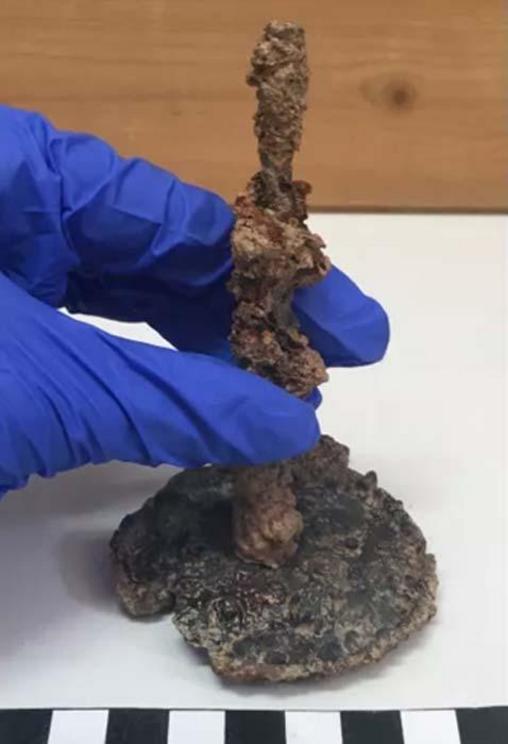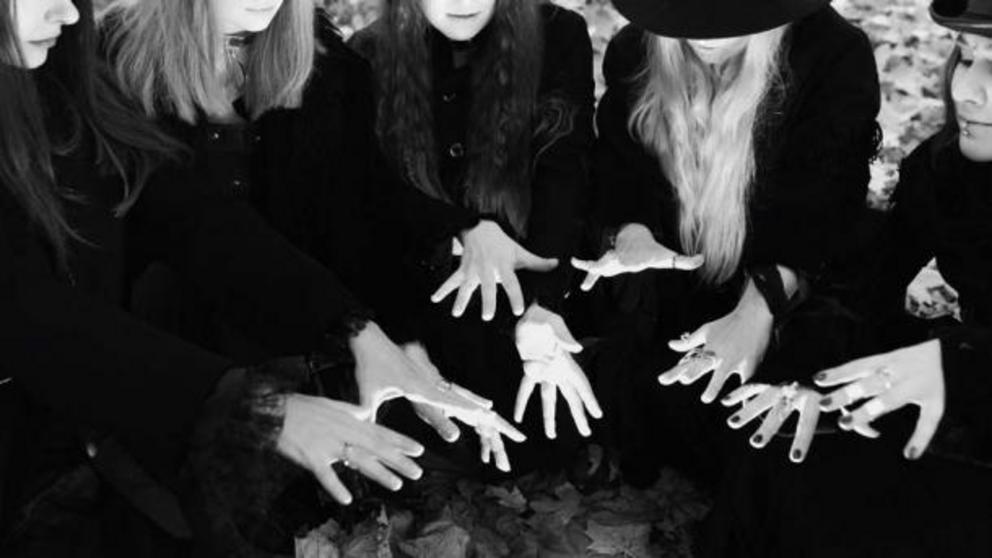Witchcraft at the Agora, Athens revealed in new study
Top image: The ceramic "curse" jar, used as a form of witchcraft in Athens, as it was found beneath a building used by craftsmen in the Agora of Athens.
Witchcraft, as those who go beyond superficial Sabrina well knows, is all about “energy transferal.” This bizarre statement is made perfectly clear in the discovery of a jar containing a mutilated chicken in Athens, Greece, which is giving archaeologists a unique insight into the ancient mystical world of witchcraft in ancient Athens.
In 2006, archaeologists were excavating in the ancient Agora of Athens (Market Hill), located to the northwest of the Acropolis. They discovered a jar beneath a craft worker's lodge and within it was the surprising discovery of a collection of selected chicken bones. This, according to the writers of the new study “reveals new evidence for how witchcraft in Athens was used as “magic” in the ancient city.”
 The chicken parts within the jar were pierced by this long iron nail. Nails were commonly used in ancient curses, and it seems this was also true of witchcraft in Athens.
The chicken parts within the jar were pierced by this long iron nail. Nails were commonly used in ancient curses, and it seems this was also true of witchcraft in Athens.
Witchcraft in Athens: Group Curse Inscribed On Vessel
Professor Jessica Lamont, a classics professor at Yale University, published an article in the March 2021 edition of the journal Hesperia. The researcher wrote that archaeologists found the 2,300-year-old ceramic jar , along with a coin, beneath the floor of the Agora's Classical Commercial Building that was a hub of ancient craft workers .
The author explained that somewhere around 300 BC, the names of 55 people were inscribed on the vessel, and that the Greek words for “we bind” were also present. Then, the curse was activated when a large iron nail was driven through the pot that contained the “dismembered head and lower limbs of a young chicken.”
In a Live Science article Lamont explained that both nails and chicken parts were commonly used in ancient curses and were believed to have “an inhibiting force and symbolically immobilized or restrained the faculties of [the curse's] victims.”
 An image of energy transferal depicting the flow of magical energy emanating from female hands. It was “dark” energy transferal that brought 55 people together to put a curse on one person, according to the witchcraft in Athens research study.
An image of energy transferal depicting the flow of magical energy emanating from female hands. It was “dark” energy transferal that brought 55 people together to put a curse on one person, according to the witchcraft in Athens research study.
Dark Energy Transferal Was Behind Witchcraft in Athens
Now, back to that unorthodox “ energy transferal ” statement I made in the opening sentence. Dr Lamont wrote that the ceramic jar and its contents probably represents “an ancient curse .” The people, or witches, who created the curse may have wanted to “transfer the chick's helplessness and inability to protect itself,” said the writer.
However, other, less academic words for helplessness are panic, fear, and terror. Fear and terror were part of the “energy transference” in the beliefs behind witchcraft in Athens.
Some of you might be thinking energy is an unusual word to describe panic, fear, and terror but in this instance the writer, myself, was brought up fishing. One never forgets the panic, fear, and terror, not only in the first fish you kill, but also in how you feel while you are doing the killing.
Holding high a hickory wooden weapon called “a priest,” because it delivers the last rights , I, the seven-year-old boy, smashed the head of a fish in a state of utter horror in a scene crackling with pure static energy, until the twitching fish finally passed onto more etheric streams. And only then did the energy in me subside.
 A coven of modern witches, who cast their spells together to make the curse stronger just like the practitioners of ancient witchcraft in Athens.
A coven of modern witches, who cast their spells together to make the curse stronger just like the practitioners of ancient witchcraft in Athens.
Witchcraft Requires a Spell Caster or Castors, and a Victim
All spells have a caster and a victim , but in this case it seems there were a multitude of victims (perhaps as many as fifty-five). The writer says only the chicken’s head and lower legs were found in the jar indicating that the witches, or master of ceremonies, twisted off and pierced the head and lower legs of the chicken. Dr Lamont concluded that the so called “curse composers” aimed to incapacitate the use of those same body parts in their victim. You see, “energy transference” really is at the dark heart of witchcraft.
To further bolster the black magic the jar was placed near burned pyres with further animal remains, “something that may have enhanced the curse's power,” according to the research study.
The researcher considered the death of Alexander the Great in 323 BC as being connected with the circumstances of the curse, during a time when several factions warred for control of Athens.
However, the biggest clue as to why the curse was composed is perhaps in “where” it was discovered. The jar was discovered beneath a building used by crafts workers and therefore a center of workplace disputes.
This is what led the study’s lead author to conclude that a lawsuit may have been unfolding. And that the people’s names on the vessel might have been written in “the lead-up to a trial concerning an inter-workplace conflict,” Lamont wrote.

